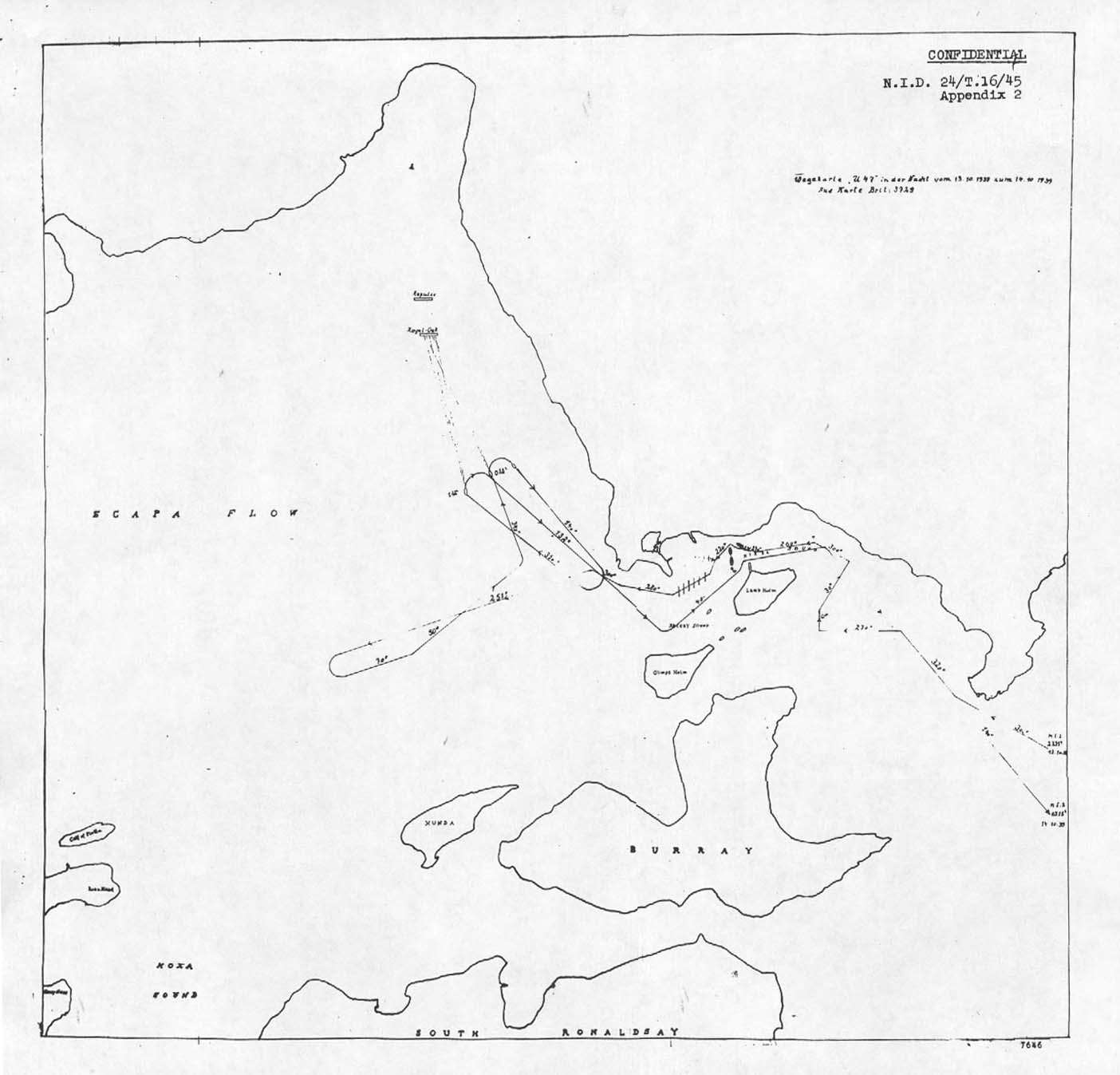REPORT |
||
ON |
||
SINKING OF “ROYAL OAK” |
||
Reproduced from |
||
British Admiralty translation |
||
N.I.D. 24/T. 16/45 |
||
Sinking of "ROYAL OAK" |
||
Sources consulted: |
||
K.T.B. (Log) of Fuehrer der U-boote West (Konteradmiral DÖNITZ) covering the period 1/10/39 - 31/10/39. |
||
Log of U-47. |
||
Operational Orders, B.d.U., 1939/42, Part 2. |
||
A. General Information, Planning, etc. Source, K.T.B., F.d.U. West. |
||
The receipt of a wireless signal from U-47 on 15/10/39: “Operation successfully completed. “ROYAL OAK” sunk. “REPULSE” damaged.”, gives rise to Dönitz comments in his log on what he describes as “the successful completion of a long-prepared undertaking - penetration by a U-boat into Scapa Flow”. |
||
The possibility of such an operation is stated by Dönitz to have been under consideration since the beginning of hostilities, but exhaustive research among the archives has failed to reveal any definite record of discussions on the subject. The only definite mention that can be found which involves a higher authority than Dönitz himself is under the date 15/10/39 in his log: “I decide to proceed with the operation, and obtain approval from the Supreme Commander of the Navy in a personal interview at Naval H.Q.” This statement appears in the course of a recapitulation by Dönitz of the planning which he personally carried out prior to the operation. No date is given for the interview mentioned above, but from internal evidence it appears to have taken place at some date after September 26. |
||
From Dönitz' summing-up, it appears that the first step to be taken was a request that Naval H.Q. should draw up a chart of Scapa, showing location of supposed defenses. Special air reconnaissance was carried out (26 September). The results of this, described as excellent, gave a complete exact picture of Claestrom Sound, over Risa as far as Switha; parts of Hoxa Sound; Holm Sound; Scapa Bay; and Kirkwall. |
||
Meanwhile during the period 13th to 29th September U-14 made a special reconnaissance trip to the Orkneys, bringing back detailed reports, mainly concerning tide conditions, lights, and possible warship patrols. The entire report is to be found attached as an appendix to Operational Order No. 16 (North Sea), i.e., the Order handed to Prien |
||
In Dönitz' log it is stated that the Commander of U-14 held the view that a penetration into Scapa Flow through Hoxa Sound would be possible. Examination of aerial photographs, however, convinced Dönitz that this was not so. Further air reconnaissance of Hoxa Sound was carried out, which reinforced that a penetration at this point was impracticable. He states his view as follows: “I hold that a penetration through the boom in Hoxa Sound is hardly possible, and a penetration through Smitha Sound and Claestrom Sound is impracticable on account of the boom defense there.” His decision was that the attempt should be made through Holm Sound. The following is his appreciation of the situation there: |
||
“Holm Sound is protected exclusively by two apparently sunken ships lying obliquely in the navigable water of Kirk Sound, together with one ship lying on the north side. South of these obstructions as far as Lamb Holm there is a gap, 170 meters wide, 7 meters in depth up to the shallow water. Also north of the sunken ships there is a small gap. the |
||
- 1 - |
||
